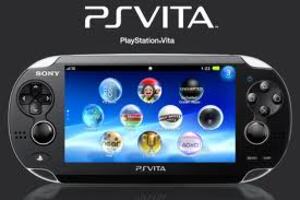
PS Vita is nearly upon us, and we couldn’t be more excited. Here at Push Square we've decided to pick our most anticipated elements of Sony’s new handheld baby before it hits stores, from new online approaches to all those control methods, plus more. We've also bashed out a few of our quibbles and concerns, too. Which parts of Vita have us giddy for launch day, and what things are making us hot, bothered and cautious?
The Good
Cross-Platform Play
Sony will be hoping to leverage some of the hype for Nintendo’s upcoming Wii U by virtue of Vita and PlayStation 3’s ability to hook up for video game fun times. Vita could effectively become a controller for PlayStation 3 titles, allowing developers to use the extra screen in a similar fashion to Wii U’s additional display. The functionality is clearly in Sony’s mind, as evidenced by this 2010 patent that was recently discovered.
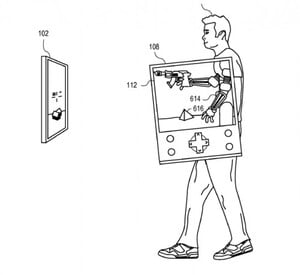
A key difference of the Vita / PS3 connection is that the handheld here is not a simple dumb terminal, as Wii U’s controller is generally assumed to be. Vita, of course, has its own processing power and is a system in its own right, meaning that it’s free to be disconnected and taken out for solo play away from the console.
The concept of data transferring between systems has already been displayed in launch titles such as MotorStorm RC, where asynchronous cross-platform connectivity allows save data to be shared between Vita and PlayStation 3, allowing the game to be picked up and played anywhere. Other games like WipEout 2048 will let players race directly against PS3 WipEout HD owners straight out of the gate — there’s plenty of room for this concept to expand if it’s happening in at least two different ways from day one.
Processing Power
The raw hulk of Vita’s insides is what enables this cross-platform business to work so well: it’s close enough to PlayStation 3 to share some assets, and that’s going to prove valuable when it comes to multiplatform titles. There shouldn’t be any risk of Vita missing out on any of the big games, especially if existing models from high definition consoles can be dropped in easily.
A large part of Vita’s appeal to some is that it’ll be able to provide a console-like experience in the palm of your hand.
A large part of Vita’s appeal to some is that it’ll be able to provide a console-like experience in the palm of your hand. We think that’s pretty exciting stuff, with the likes of Uncharted: Golden Abyss and Gravity Rush already attempting to go toe-to-toe with Sony’s TV-tethered bigger brother. That power could also be diverted to other things, though, if that’s not the type of game you want to play on a handheld: for smaller, more portable-appropriate titles, power is not going to prove a limitation on Vita, which in turn should see some interesting results.
The Social Network
Processor speed isn’t the only factor that Sony is relying on, though. We’re looking forward to seeing how well they carry off their goal of building a social network around Vita and its Near functionality. The sleek slab will broadcast data to others in the area, letting everybody see what everyone else is playing, compare scores and so on, even putting together activity streams comprising trophies earned and other in-game accomplishments. Maybe you’ll even discover new friends and titles you've never heard of.
Don’t worry — if you want to play undisturbed by a constant stream of social interaction, it’s possible to make your system undetectable by setting certain locations as private. Trot out into the crowd, however, and you’ll find it’s possible to create and find challenges ‘dropped’ into the world. For example, you could set a fantastic time in WipEout 2048 and throw down the gauntlet for any other players. If somebody should overcome your skills, you’ll receive a message to rub your face in it. Expect us to be laying down Push Square challenges wherever we walk — take us on if you dare.
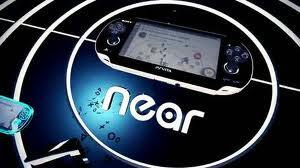
In addition, each game comes with a Live Area, filled with updating facts, messages and trailers, providing a direct connection between developers and players. PlayStation Party also addresses an issue that has bugged PlayStation 3 owners for a while: friends can now group together and use voice chat across different games. You’ll be able to jump into a game together from here too.
So Many Control Schemes
Vita offers a bunch of ways to play, from touchy-feely inputs to your more traditional game controls. Dual analogue sticks — not PSP-style nubs! — will help to bring those console-like titles to the system and help to open the possibilities to any of the expected genres. Two shoulder buttons seem to be missing, though...
Not to worry, as Vita can be controlled in entirely new ways. The system’s rear touch panel can easily fill in for those missing buttons, but better yet it’ll bring new experiences to handheld gaming. Not only can you prod the action directly on its capacitive multi-touch front screen, but now there’s an avenue to interact with game worlds from a different perspective. Little Deviants lets you run your fingers on the back to distort environments, raising hills to roll creatures to their destination. The football can be passed with greater accuracy in FIFA 12: tap on the screen where you want to boot it, get in range of the goal and press exactly which area of the net you want to shoot for on the rear touch surface.

Cameras tucked in the front and the back, a microphone and gyroscopes are more familiar alternative control methods and help to make up the most varied set of control schemes in a single console to date. They may not be as intriguing and fresh as the rear touch panel, but they’re still going to prove valuable to the system. Motion is already used in Uncharted: Golden Abyss to balance across tightropes, and it’s great for steering your futuristic WipEout craft.
Screen Saviour
It’s an incredible feature-set across the board, but what would the point be if it all looked like a blurry mess? Fear not — PS Vita houses a gorgeous window into gaming. Its five inch OLED touch screen is sharp and vibrant, bringing games bursting to life. Rayman Origins is one game that definitely benefits from this; it looks absolutely beautiful.
The screen’s size has been expanded over PlayStation Portable to really take advantage of the new display technology. Sony experimented with the dimensions before deciding on its 130mm final form, even prototyping a version of the system that omitted all buttons in favour of touch screen inputs. Luckily for us, that didn’t come to pass.
The Bad
We’re not fans of everything surrounding Vita, however. We also have some misgivings and concerns about decisions made during Vita’s development. Read on for the potential problems that we see preventing Vita from leading a completely good life.
Memory Loss
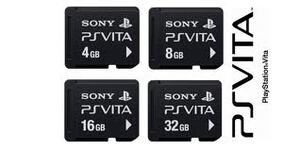
First and foremost, as if we didn’t have enough memory cards clogging up our desks, drawers and pockets, Sony created an all-new proprietary storage for Vita. Coming in 4GB, 8GB, 16GB and — Europe excepted — 32GB varieties, one of these tiny cards is going to be an essential purchase alongside the system. Yes, alongside — unless you grab a set such as the U.S. and Canada exclusive First Edition bundle, the memory card is a separate buy. Unlike Nintendo 3DS, there’s no card in the box by default.
That might be fine if they were only to be used for downloadable titles, but in actuality some launch titles won’t even boot up unless a memory card is detected, making it less an optional accessory and more an expensive necessity. Uncharted: Golden Abyss, Hot Shots Golf: World Invitational, Disgaea 3 and others all refuse to get off the starting blocks without those gigabytes of storage.
The card sizes, even before launch, also sound inadequate when you consider that the downloadable versions of the first retail titles can fill up to 3.3GB in one fell swoop. We hope you’ve got deep, note-lined pockets.
It’s Expensive
When viewed as a whole — the games, the memory cards, the 3G service — we are in agreement when we note that entering the PS Vita market is a pretty pricey proposition. While the console is quite evenly priced, especially when compared with 3DS’ initial launch cost, the accessories are seemingly being used to subsidise the cost to make this possible. When you consider that a memory card is near essential, you may as well add the price of that to the system, whether it’s the smallest available model at £14.99 or the lunacy of the American 32GB’s $99.99.
Where’s the incentive for digital downloads when physical copies, in all likelihood, will be found cheaper?
In the UK you could buy another game for the same amount as a £39.99 16GB card. That’s pretty crazy in itself, as retail games are being priced up between £15 and £40 too. The low-to-mid end of this scale is perfect for portable titles: the higher, not so much, and a reminder that there is a literal price to pay for console-like titles in such a small package. Downloadable versions of these titles don’t get much cheaper; so far they’ve been announced as being sold at RRP or with a measly 10% discount. That’s not good enough — where’s the incentive for digital downloads when physical copies, in all likelihood, will be found cheaper? Still, you’ll have some free augmented reality games to mess with if you can’t afford anything else.
Consider also the extra fees required if you go for the 3G model. Those monthly payments, though not contracted, are going to add up if you want to make the most of all the system’s social functions and GPS when on the move. The cost of entry, considering the system alone, is reasonable, but with the added costs and expensive titles, how many people are going to stump up to make the most of Vita?
Inconsistent Online Functionality
Some titles fare better than others when it comes to online functionality in Vita’s launch window. Looking at racing titles alone, on the good side of the spectrum you’ve got WipEout 2048’s all-driving cross-platform bonanza, while MotorStorm RC and ModNation Racers: Road Trip take the undoubtedly cool asynchronous multiplayer approach but don’t deliver real-time online racing. The latter’s ModSpot has been removed for the Vita version, too.

The social features across the board should make up for this somewhat, but we hope things have really stepped up by the time the likes of LittleBigPlanet roll out. There’s no reason we shouldn’t be able to enjoy ghost racing, kart meet ups, level creation and head-to-head online in one title; let’s hope this one’s just down to the rush of a console launch.
The Battery
We’ve come to accept 3DS’ battery life issues by now, to the point where for some of us they’ve dissipated entirely. PS Vita is the latest victim of a shortened energy span, though, pumping out four and a half to five hours of gameplay with 3/4 brightness and 1/2 volume in our Vita hardware review tests. Once the juice has dried up the system is out of action for two and a half hours while it has a nice regenerating charge.
With the amount of power it’s flinging around, it was to be expected that Vita would have some longevity issues in the battery stakes, so it probably does a better job than 3DS, comparatively. While it’s not as bad as it could have been we’re all for lengthier gaming sessions, and it’s going to be a real drag when it comes to long haul flights. Best pack both Vita and 3DS, unless you grab an official battery pack.
eBooked
There was some debate amongst the staff about the point that would round off these worries. The console’s size, with its protruding analogue sticks, is not the best fit for the average pocket. The game card slot is awkward to open. There are potential issues with load times, judging by some demos. As traditionalists, though, we’re going to settle on the fact that Vita game instruction manuals only come in digital form.
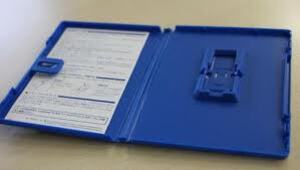
Yes, it’s neat and modern to store all the information nicely on the game cards, and yes, it’s more eco-friendly. Yet peeling the cellophane from a box, inhaling that new plastic aroma and flicking through a pristine paper booklet is one of the pleasures of buying a game, a routine that many of us are very happy to go through before finally sitting down to play our new prize. Clicking an on-screen link doesn’t quite hold the same romance.
The manual has been on the decline for a while, often replaced by mere slips of paper, or buried beneath advertisement flyers, online passes and downloadable pre-order incentives. By removing them entirely from Vita, though, Sony are only speeding up the erosion of what was once considered an essential part of the package.
What are you most looking forward to when PS Vita launches in the coming weeks? Does any one feature stand out in particular? Or do you find yourself nodding more at the latter half of our list, frustrated by potential problems with the system? Let us know in the comments below.





Comments 24
Nice story Mike. The positives far outweigh the negatives for me, but I think the memory situation is a big problem.
Thankfully many retailers are starting to bundle memory sticks with the system, which at least makes things a little easier to swallow.
Not interested at all in getting a Vita right now. I'll stick with my 3DS for portable gaming.
I'm still content to wait. i haven't found any bundles that aren't ridiculously priced, and i'm jonesing for some PSOne Classics (which it won't play at the outset anyway). I may actually wind up picking up a PSP; i still haven't quite decided :3
@theblackdragon I was going to say, if you just want PSone games on-the-go, you're probably better picking up a cheap PSP.
I'll get this eventually... when the price drops to about 150$ used. I know I have a long wait, but I just got my PS3 fixed at the start off this year. I got some catching up to do haha.
Really looking forward to it. If it's not for you, fine - don't buy it.
On the one hand you're saying that the memory cards don't seem to offer large enough capacities for the digital versions of games; on the other, you're saying that physical media is likely to be cheaper anyway, so why bother with digital downloads. Asked and answered, I'd say.
Too big to fit in the pocket? Does anyone actually envisage putting a £200+ console with a large, exposed screen in a pocket anyway? I sure as hell don't. If I'm not using it, it'll be in its case, and that alone makes it impractical to put in a pocket. It's the same with my PSP, and also my mum's DSi, which when in its case, is also too bulky to be considered 'pocket friendly'.
Price? Fine by me. The 3G console, 16GB memory card (would be 32GB if they sold them here), 2 games and a solid carrying case still cost way less than my phone, so I don't view it as particularly expensive. And it plays far better games.
The cost of 3G? Largely irrelevant. You can use any SIM, so stick a giffgaff unit in there and it's £5 for 500MB, £7.50 for 1GB or £12.50 for 3GB. And with no contract, you only need top up when you need to make use of it. 3G need not be a continuous cost unless you want it to be. Better to have it and not need it, than need it and not have it.
Different memory cards? Not an issue. Buy a digital camera, it uses one format; buy a mobile phone, it uses another format; buy a game console, it uses another format. It's just the way things are. I had to buy my first ever MicroSD card for my phone (and an adapter to use it in my PC) as it wasn't a format I'd had need of before, but never gave it a second thought.
Memory card slot a bit tricky to open? Stop biting your nails!
Of course Sony are going to look to make some money on accessories, as the Vita is selling at a loss. If accessories were cheaper, you'd probably be looking at £399 for the Vita, and everyone would be moaning about that. People seem to expect everything for next to nothing these days.
It seems to me that after the initial 'wow' at Vita's reveal, the entire gaming world has now suddenly remembered that they're not supposed to enjoy Sony's products, and are looking for every minor detail, no matter how irrelevant, just to say something negative.
I'm going to wait for those special Christmas bundles :3
@Paranoimia - What might be "irrelevant" to one person, might very well be a deal-breaker to others. Every game system I've ever owned has negatives to it, and Vita is no different. While I've enjoyed the hell out of the system over the past month and a half, it's not perfect. (I can't believe I just said that)
@Paranoimia To reply to a couple of your points:
Surely the fact that physical media is likely to be cheaper than digital downloads is a problem in itself?
Do we really need another memory card format, though? My 3DS, laptop and camera all use the same standard SD card. My phone uses MicroSD. To power all four of these I can essentially use MicroSD cards and put them into the SD adaptors. The cost of these new cards is ridiculous, too: a 16GB SD card sets you back about £10, yet you're looking at four times the price for a Vita card of the same size. Per GB, it's less value for money than even Xbox 360 hard drives (which are also overpriced when compared to other hard drives on the market).
@SandersEvers
I'm sure you can charge while playing, yes, but that's not going to help if you're on a long journey, which is a reasonable thing to expect of a portable.
Digital manuals may be becoming more standard, but it doesn't mean that those of us who grew up with them can't be a bit grumpy about it.
Don't forget that there were an equal amount of positives brought up in this article! We're all really looking forward to the system and many of us have launch day pre-orders locked in or paid for, but there are downsides to everything. Personally, I'm more excited about Vita than I ever was about 3DS.
Impressive balanced article, nice.
I didn't know about the lack of physical manuals, that blows. Whenever I buy a used game at Gamestop I always look through the boxes until I find one with a manual. People may even try to return these thinking they were previously opened - a hazard w/ shopping for new games at Gamestop.
I'm surprised you didn't mention the game carts as a good feature after the PSPgo's lack thereof. I thought it weird Sony would backpedal after making a system w/o carts and then adding them back into a new system. A good move by Sony deserves a pat on the back.
Those memory cards are so far out of line in pricing w/ everything else out there. Yes, it's a new format, but are they made out of Kryptonite or something?
I'ld like one, but I don't see why anybody would buy something day 1 anymore w/ all the well publicized price drops in electronics, first the iPhone and then the 3DS. And then of course you get the holiday deals. I don't see things improving so much that all is right in the world before Christmas. Plus if Vita sales decline after launch in the EU/US like they did after launch in Japan, and then the WiiU makes a big E3 splash and subsequent holiday sales push, and the 3D already seems to have dropped from $169 to $149, well, what's the rush?
I am still very interested in getting the PS Vita but I'm going to wait until it drops in price before I pick one up. I learned my lesson with the 3DS launch. I'm sure that it will have a nice library of games and hopefully the cost of those memory cards will have dropped by the time the price of the system goes down.
@Mason - Do we need another card format? Probably not. Does it really matter that we have one? To me, not in the slightest. Okay, so all of your equipment uses SD cards in one format or another, and you can use adapters. With me, it's exactly the same, but with Memory Stick. My having to switch to SD for one piece of equipment (my phone) is no less inconvenient than anyone else having to use the new Vita cards.
Okay, so the Vita cards are more expensive, but as I've said, the Vita is sold at a loss, so Sony have to make money from somewhere. I'm sure Sony could have sold cheaper cards, but then they'd have priced the Vita at a profitable price-point, (probably £350 to £400) which would have ensured next to zero sales. Eventually the price will of the cards will drop, and/or companies like SanDisk will offer cheaper versions.
That aside, I don't see myself needing more than one or two cards. With the built-in ability to back up games to PS3, PC or MAC, you won't actually need that much on-board storage.
Finally - is it a good thing that games on physical media will (possibly/probably) be cheaper than the digital versions? No, not at all. But I don't see how that's any different on Vita than it is on PS3, Xbox or OnLive - they all currently charge excessive, full RRP prices for digital games.
I'm more excited for the Vita each day. It's an unbelievable piece of machinery that my childhood self would dream about. Honestly, why do we try to find the down sides in everything. Our first world problems are so ridiculous... If you don't like it.. don't buy it. It's in no way necessary. But if you enjoy life in general and enjoy to play video games... how in the hell is this a bad thing? Little gripes about prices, or memory cards, or digital media(as opposed to filling another landfill, and don't get me wrong i love to hold and smell that manual too)... It's just an amazing little thing that could only bring happiness to your life, and if it doesn't.. get over it and go make a sandwich or something. I'm not attacking any of you, just the complete ludicrous idea of finding the negatives in even the most enjoyable aspects of our lives. We're so lucky it's insane.
Sorry for the rant, just bothers me.
@Paranoimia Do you not find it flawed that a reasonably priced memory card that would facilitate the purchase of a decent number of downloadable titles isn't available on launch day, though? Of course the cheapest option, 4GB, isn't much money to drop down and will ensure that all games can be played, but it's not going to last long once you start downloading, and I'd be less inclined to download games if I knew I was going to have to play at file management on my PS3 every time I got a new one.
If the system had stuck with an existing memory format, be that Memory Stick or SD, then that cost would have been driven down. Until the price of cards comes down, I see it as an entry barrier to PSN titles.
The digital download price structure is an industry-wide problem that isn't just restricted to Vita, I totally agree with you. This could have been a good opportunity for a major publisher to buck the trend.
@Mason - Is it flawed? Yes, clearly. But it's also understandable, to an extent.
The pricing aspect I've already covered. As for 'yet another format', I speculated several months ago that it's probably down to piracy concerns more than anything else. I don't know the technical ins-and-outs of the various card formats, but with piracy being so rampant on PSP (and DS), I suspect Sony wanted to try and create a more secure format to store digital games on. Something that's not already an industry standard is (probably) a decent first step, since they can only be read/written in a Vita, and not any existing PC hardware.
I don't know what the costs of developing a new memory card format are, but I don't think Sony would have invested in one just for the hell of it. Why do I think that? (a) They're already losing money hand-over-fist, so why invest in reinventing the wheel when they already have a perfectly good format on the market, whose sales would no doubt be increased by Vita? and (b) recently, they've started putting SD card slots in their latest digital cameras, camcorders etc., which suggests they are willing to use existing formats when possible.
I'm sure if they felt Memory Stick (or SD card) was a viable secure format to use for the Vita, they'd have gone with it.
I'm just as bothered by the format of the cord/plug/adapter. It isn't a standard micro USB, which is friggin' ridiculous... much like the DS cord was different... and now the 3DS is different from the DS. Why do we need so many types of adapters?!?! It's all about money because if you lose one or it just stops working, you can't just use your standard USB cable to charge it; you need to buy a new Sony cord for it to charge. Greed, greed, greed.
As for the memory cards being used, that was the deal breaker for me. What's wrong with SD cards? Oh, that's right... It all comes down to money again. Corporate greed.
Hopefully this system will drop in price as fast as 3DS. Otherwise I might lose interest and not buy it at all. But if it's cheap relatively soon, consider one more system sold. However, I don't expect it to drop in price within 5 months.
I really don't want to see this system fail, but I wouldn't be surprised if it did. Our current society thinks $5 for a handheld game is expensive thanks to mobile phones. How can you appeal to them so they wish to spend $40 once they've spent hundreds just to have the chance to play? It doesn't matter how great, long, deep, etc... the games are, most people see handhelds as casual and nothing more.
This is something I'm sure Sony has thought of, but they aren't the greatest at marketing their products... and that may be a huge problem for them.
@Bass_X0
There's a time and a place for everything, there's a site called Nintendo Life for people like you. Push Square is more for the Soniers.
Is it Wednesday yet? I bet my First Edition Bundle is sitting in the back of GameStop - all cuddled up to a box of overpriced proprietary memory cards - just waiting on me to come and take it home for thousands of hours on gaming enjoyment.
.... well at least a few minutes passed while I was writing that. Is it Wednesday yet?
I was the same way waiting for UPS to deliver my Vita back in December. I bet I checked the UPS tracking update about 1000 times between the Sunday night it shipped out from Hong Kong and Tuesday night when it arrived. LOL
One thing that bothers me is when people say they don't want one because of the plastic screen or crappy camera. When it was announced, most people made it a POINT to explain they don't want to pay a whole lot for it but yet those same people now complain and compare it to devices twice the price.
As much as I don't feel the First Edition bundle is worth getting over the launch edition, I bet I'll cave and change my pre order to it just so I get it early
@nathanuc1988 People want the whole world for half the price. It's unfortunate.
I've read real time online play would be patched in post launch in ModNation Racers: Road Trip. This due to wild outcry by fans.
A few years back I wanted a PSP but never got it. I will pick up a Vita when they get cheaper at one point.
@Supremeist why did you not get a PSP? was it because of the cost of the PSP console? or the lack of games that you found interesting? or the range of games?
Show Comments
Leave A Comment
Hold on there, you need to login to post a comment...